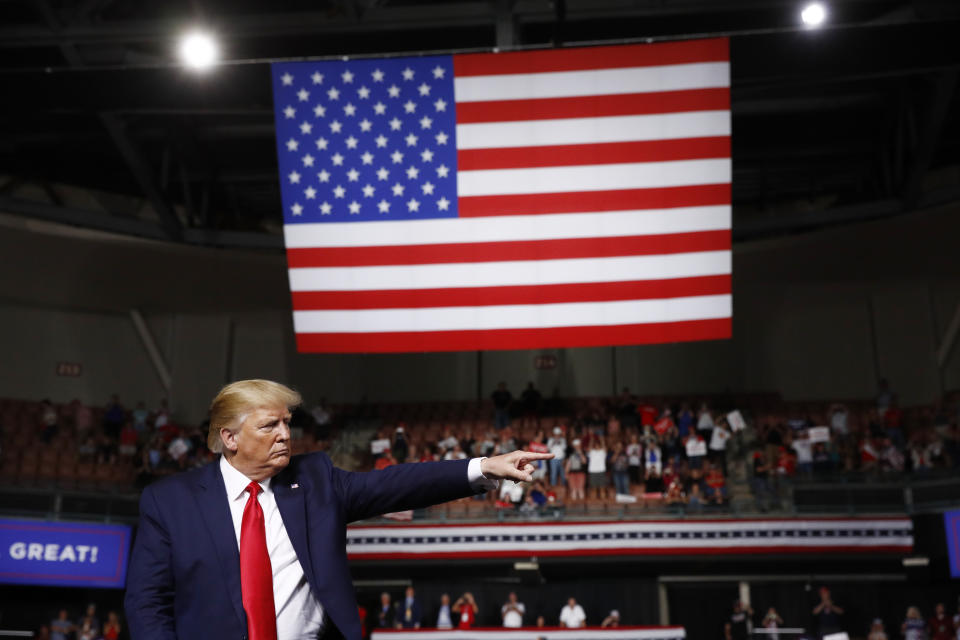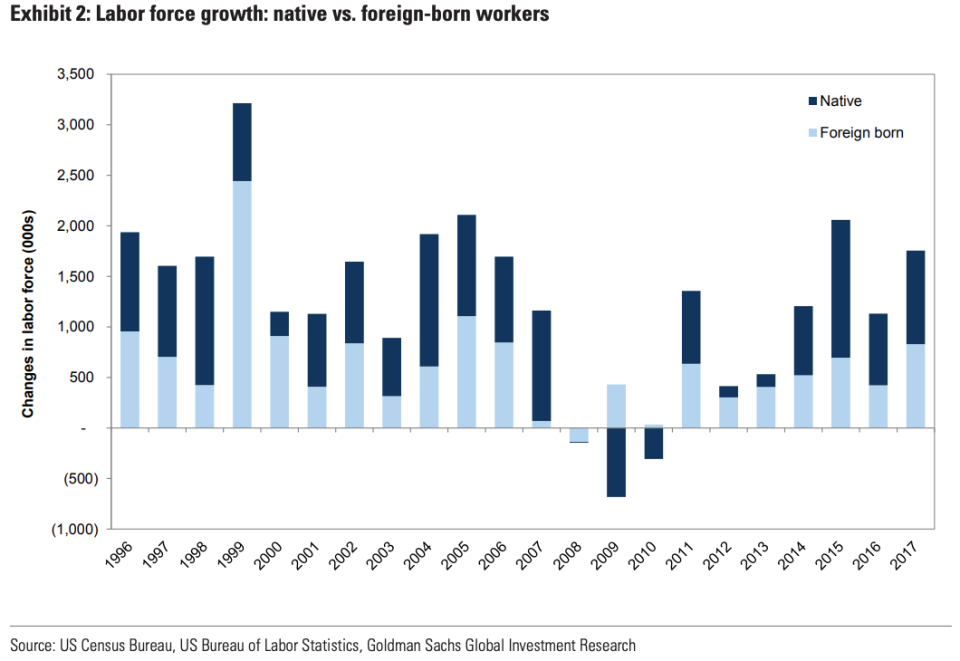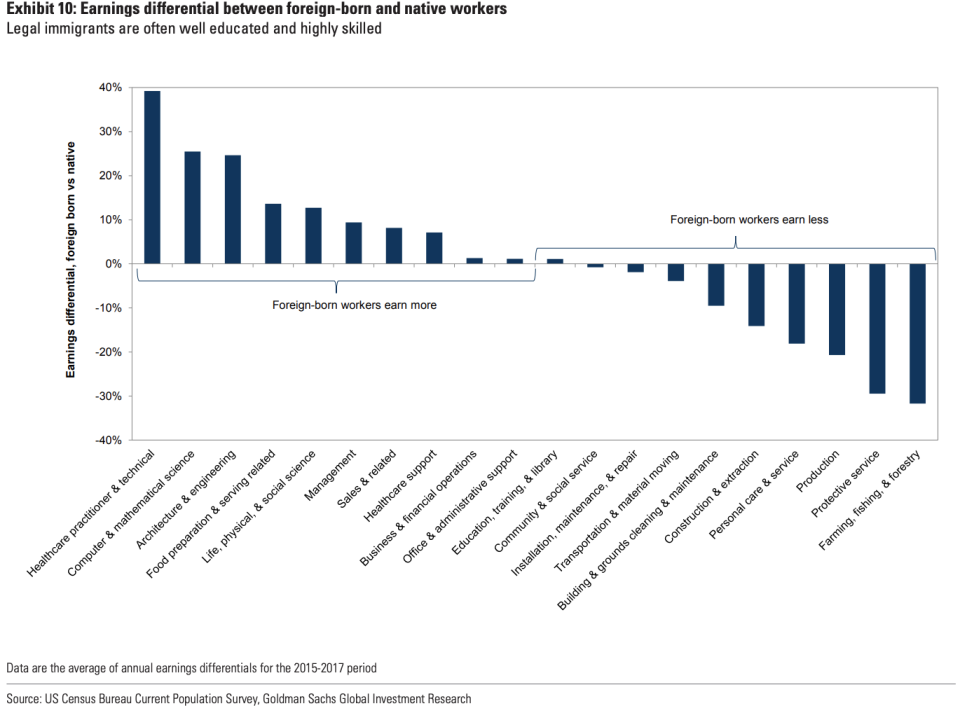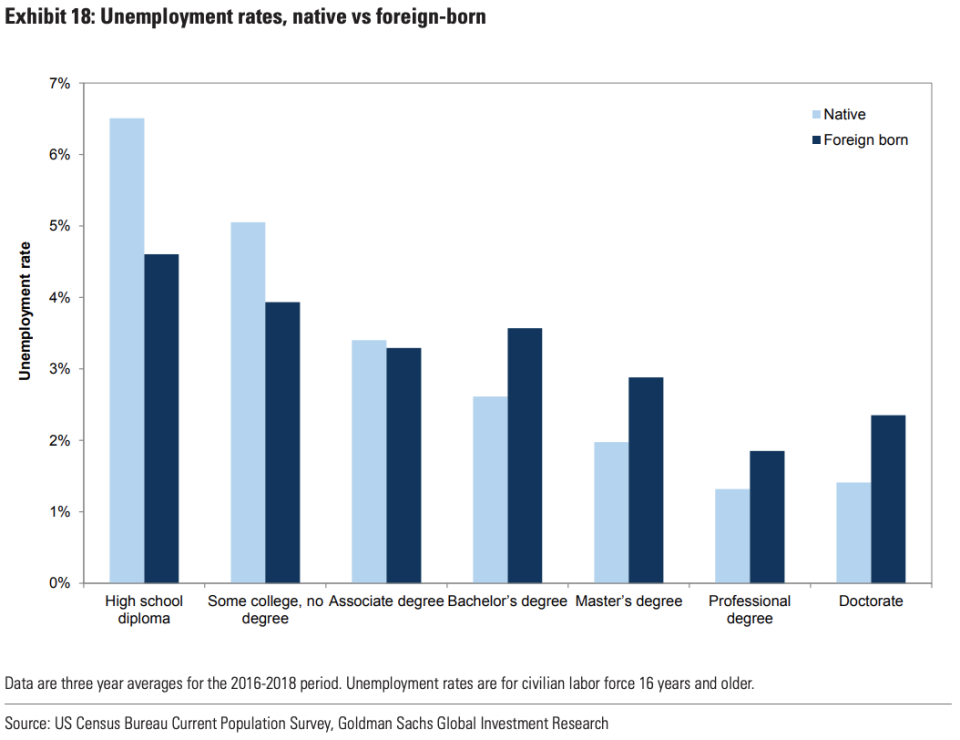Why Trump's efforts to keep immigrants out hurts the U.S. economy
Trump’s new immigration rule announced this week would deny green cards to people who are deemed likely to rely on welfare and require public housing and food assistance. This marks a stark departure from U.S. immigration policy which has historically favored family reunification.
“Give me your tired and your poor who can stand on their own two feet and who will not become a public charge,” said Ken Cuccinelli, Trump’s top immigration official, in a recent interview.
In spite of often being the target of divisive political rhetoric, immigrants continue to prove that they are a crucial source of talent for corporate America and a key driver of the United States’ global economic leadership. More than half of U.S. Nobel Prize winners have been immigrants over the past five years and foreign-born individuals and their children have founded about 45% of Fortune 500 companies.

Foreign born workers only make up roughly 17% of the U.S. labor force, but they have an outsized role in specifically the types of high skilled occupations such as computer and mathematics-related jobs that are essential for long-term economic expansion and productivity growth, according to a new Goldman Sachs report by Abby Joseph Cohen and Michael Hao Wu.
Inflow of immigrants helps pay for Social Security and Medicare
As the country grapples with the challenges of funding vital programs such as Social Security, which has an $80 billion negative cash flow, and Medicare, a growing labor force is vital for generating much needed tax revenue. Many nations in the European Union, Japan, and China are facing the prospects of a shrinking labor force, but the U.S. has managed to buck this trend with the help of the inflow of immigrants.

Over the past ten years of U.S. economic expansion, immigrants have represented 53.9% of the growth in the labor force. By comparison, their native-born counterparts only helped the workforce grow by 11.8%. As decreasing birth rates and an aging population impact the workforce, the economic importance of the continued flow of immigrants will only grow over the coming years.
Immigrant wages
Low skilled occupations have traditionally had the highest concentration of immigrants, Cohen and Wu observed. However, the occupations benefiting from the largest increases in immigrants recently are those that require higher skills and educational attainment. Roughly 50% of doctorate degrees in math and 58% in IT and engineering were awarded to international students by American universities in 2017. Foreign-born students also earned more master’s degrees in IT (67%) and math and engineering (56%) than Americans.
Corporate America took notice over the past two years and have been rewarding foreign-born workers accordingly. The analysts point out that since 2017, immigrants on average have earned more than individuals born in the U.S. at both the master’s and doctorate degree levels.

However, low skilled immigrant workers in fields such as farming and personal care & service earn less than their native counterparts. “Lack of adequate English proficiency…and their immigration status may have prompted them to accept wages significantly below the market rate for native workers,” according to Cohen and Wu.
Unemployment rates higher for immigrants
At every advanced education level, immigrants face higher levels of unemployment than their native counterparts, the analysts observed. Immigrants are also more likely to work in jobs below their education and experience levels. This results in an over $39 billion loss in potential wages every year for foreign-born workers, according to the Migration Policy Institute.

Cohen and Wu say foreign born workers educated outside the U.S. face obstacles when American employers find their non-U.S. university degrees hard to evaluate, adding that employer bias may also be a contributing factor in driving underemployment among immigrants.
More from Sibile:
Trump delays tariffs to appease Christmas shoppers
Here’s the truth about Trump’s Pledge to America’s Workers
Democratic debates: Fight over free college for rich kids
Trump adds $4.1 trillion to national debt. Here’s where the money went
Skills gap will cost US economy $1.2 trillion over the next decade
Read the latest financial and business news from Yahoo Finance
Follow Yahoo Finance on Twitter, Facebook, Instagram, Flipboard, SmartNews, LinkedIn, YouTube, and reddit.
